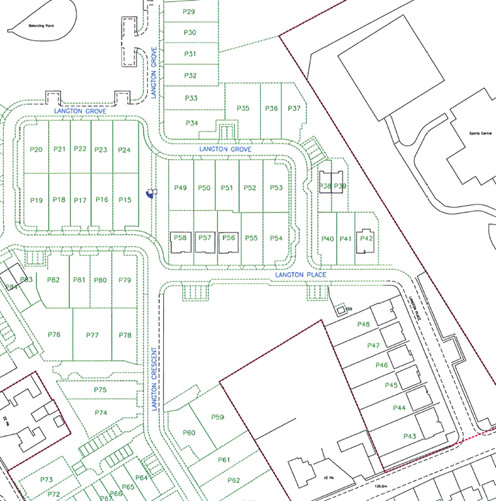Development Plan Approval
Registers of Scotland Development Plan Approval Service
The most up-to-date information on the purpose and benefits of the Development Plan Approval Service offered by the keeper can be found on the Registers of Scotland external website at:
General
Development Plan Approval (DPA) is a service offered by RoS that can provide developers with the confidence that any title extent issues can be identified and resolved prior to the sale of individual houses from the development. This reduces cost and risk for the developer whilst still retaining the flexibility to progress the development to meet changing market conditions. DPA reduces the risks in the process for the developer, and for future purchasers and their lenders, as all parties will have the certainty that the plot being purchased along with any ancillary property rights and title conditions fall within the developer’s title.
DPA and registration staff
If the property to be registered cannot be plotted accurately onto the cadastral map based on the OS map detail available to the Keeper, then the application should be considered for rejection. However, if DPA exists for the development, registration can proceed based on the digital plan detail supplied by the developer.
The DPA digital plan detail will be held in the Index layer of the index map as a DPA index entry - the illustration on the right is an example of the type of digital plan detail that will be contained in a DPA index entry, for example:
- plot boundaries;
- road, pavement & path layout;
- plot numbers; and
- parking spaces.
The plans settler is responsible for checking that the extent of the plot shown on the deed plan is in agreement with the extent shown in the DPA index entry before using that to map the cadastral unit. If there is a difference between the deed plan and the DPA, then the DPA extent should not be used to map the cadastral unit. Instead, you must contact the DPA team as the DPA may need to be withdrawn from part or all of a development if the plots are being built differently from the original layout.
There may also be occasions when an application for registration of a plot does not contain a deed plan defining the extent of the plot, but instead refers only to a plot number in a DPA scheme. This is an acceptable way of defining the extent of a plot provided the Keeper has not withdrawn approval from the DPA scheme due to changes in layout before the application is received.
Registers of Scotland (RoS) seeks to ensure that the information published in the 2012 Act Registration Manual is up to date and accurate but it may be amended from time to time.
The Manual is an internal document intended for RoS staff only. The information in the Manual does not constitute legal or professional advice and RoS cannot accept any liability for actions arising from its use.
Using this website requires you to accept cookies. More information on cookies.
Feedback
